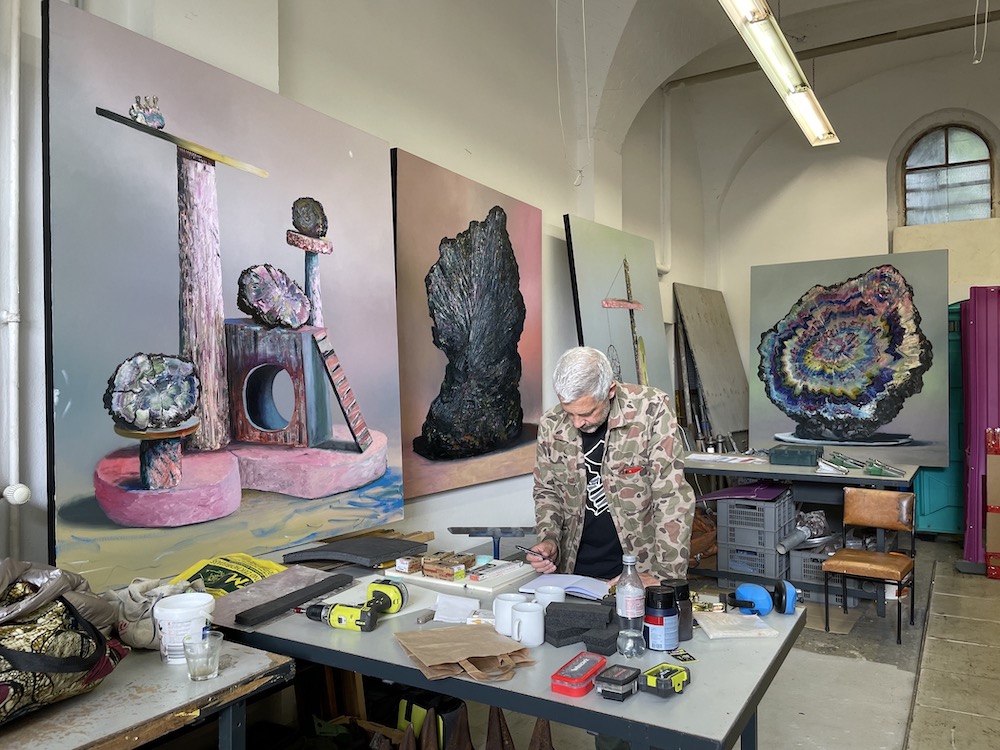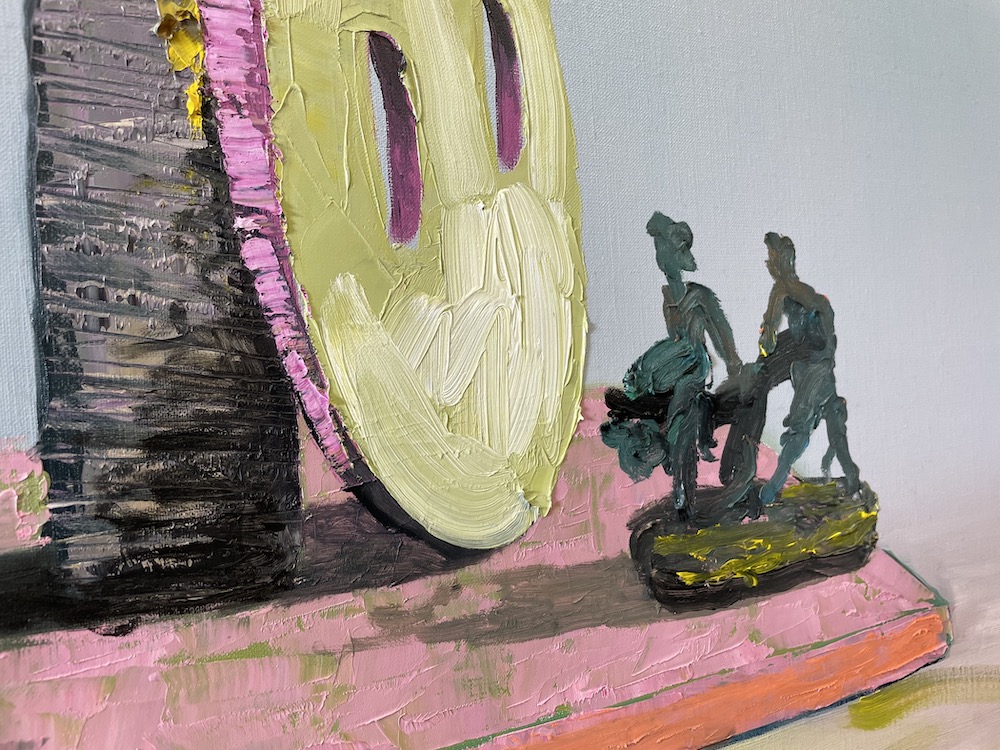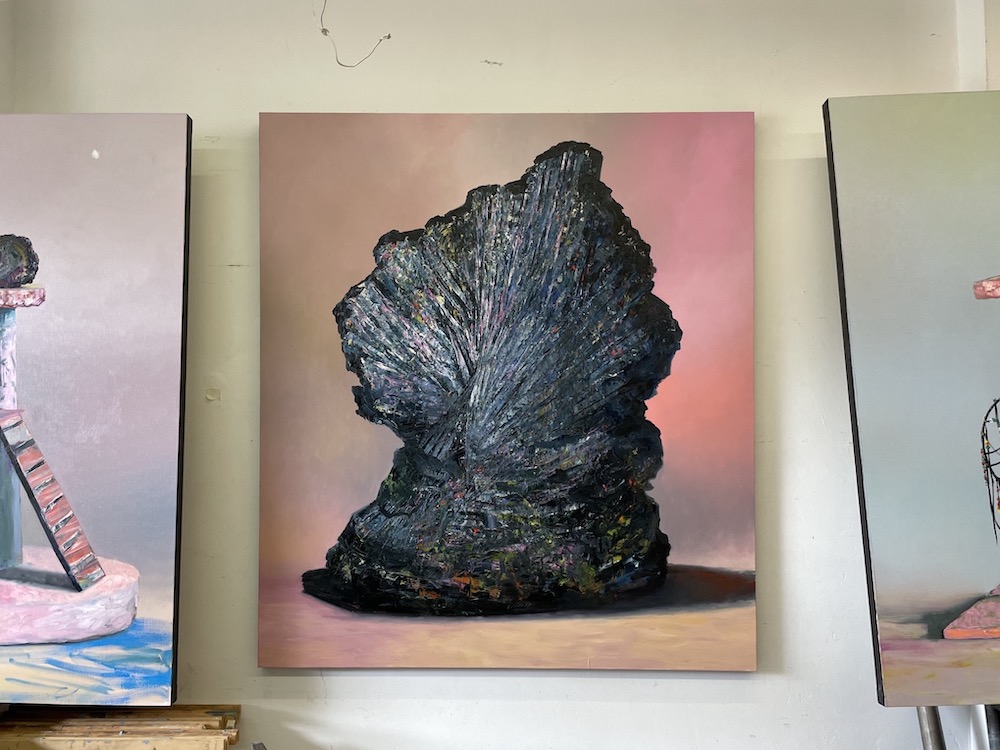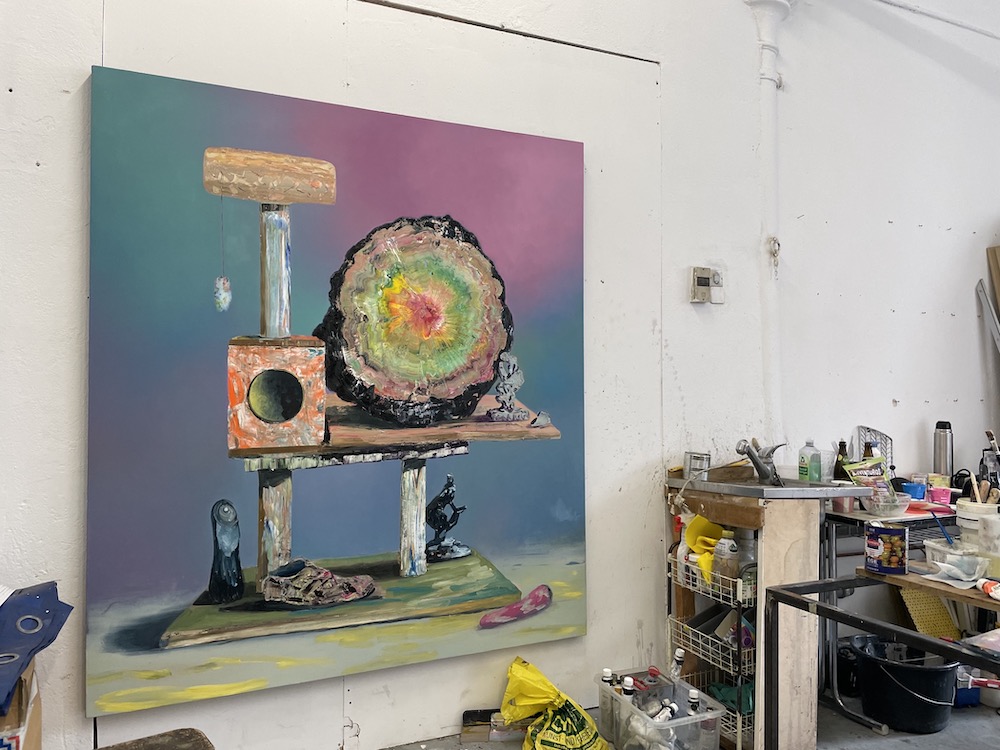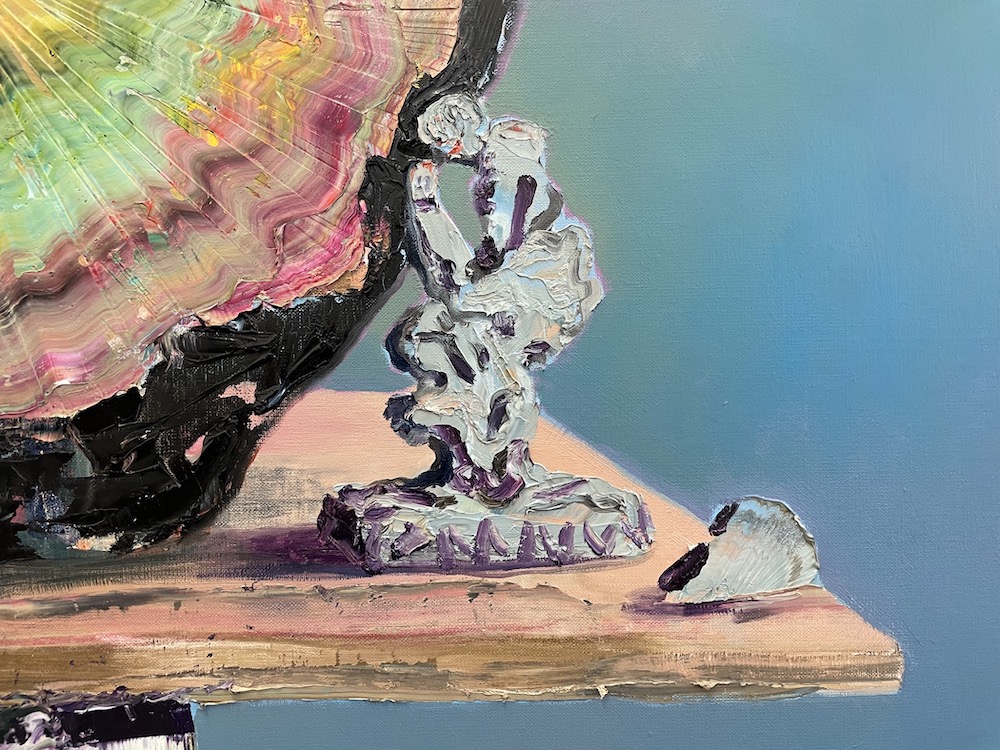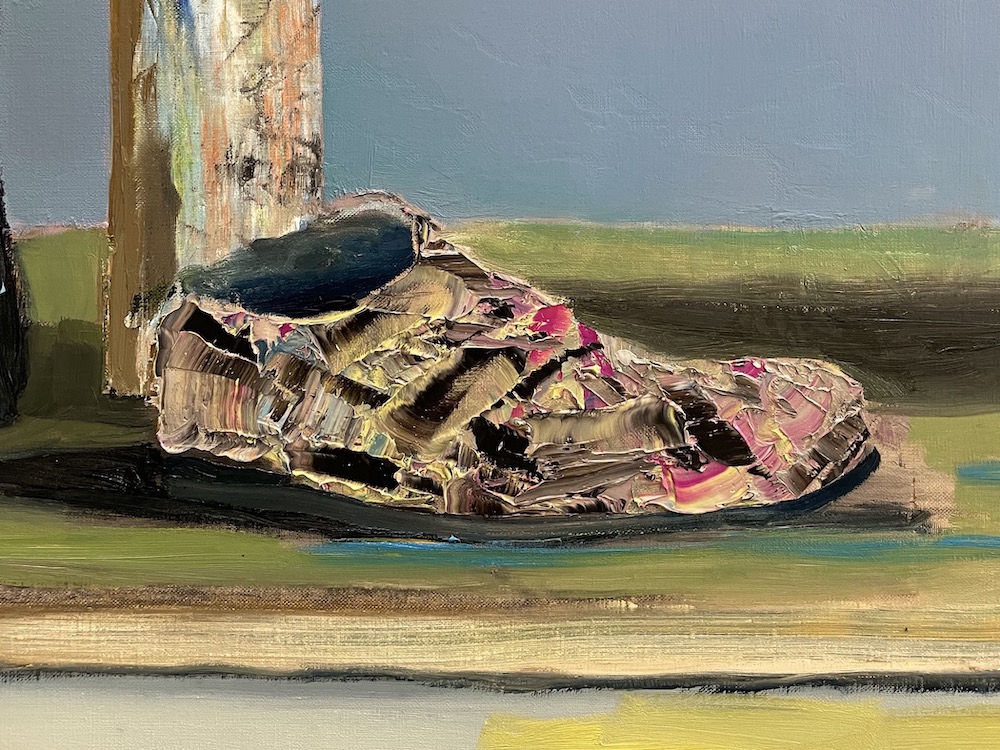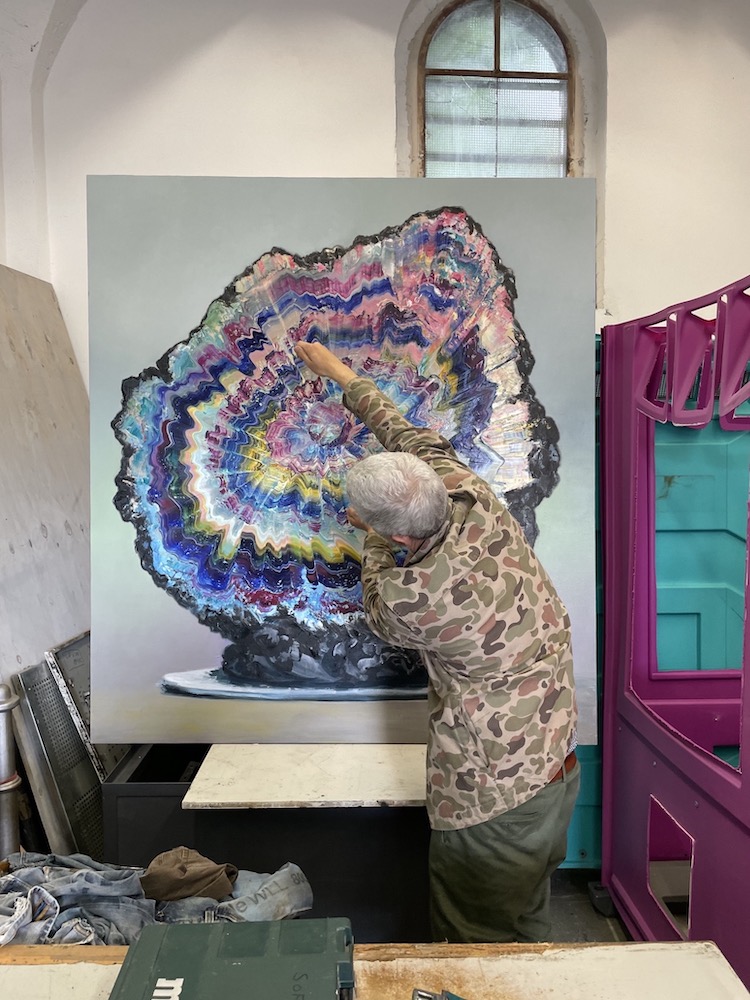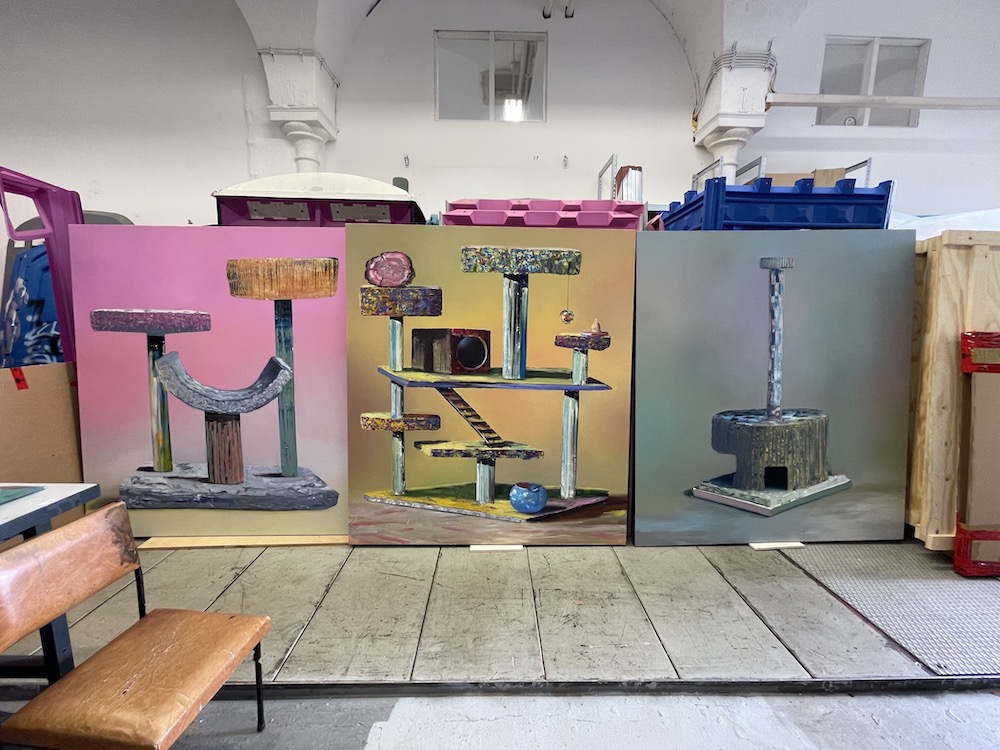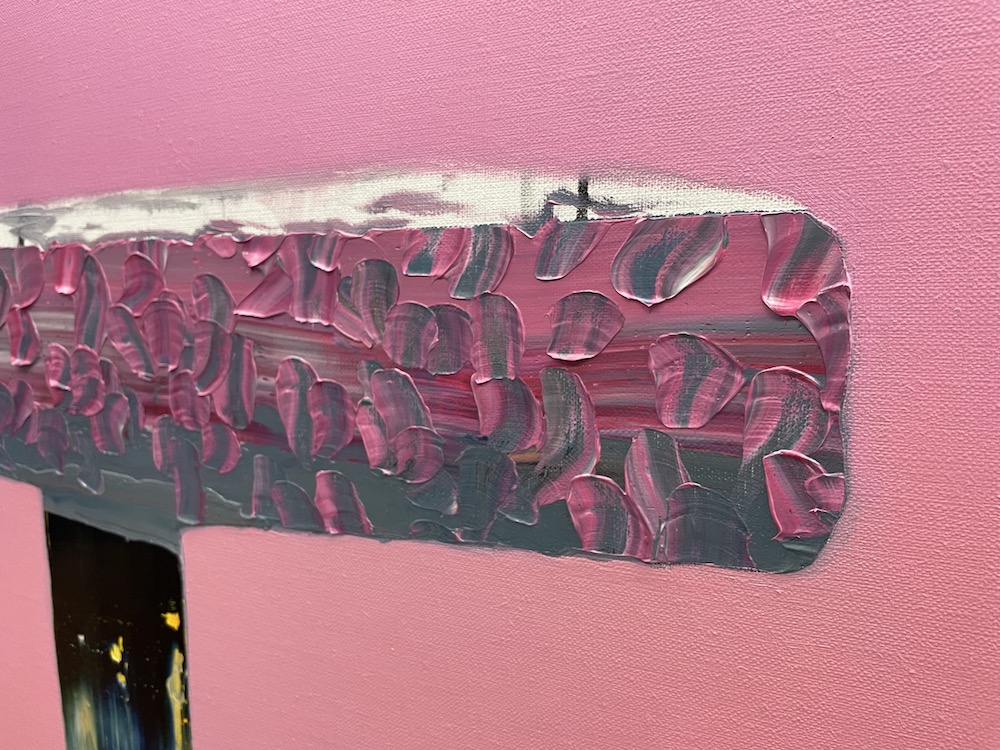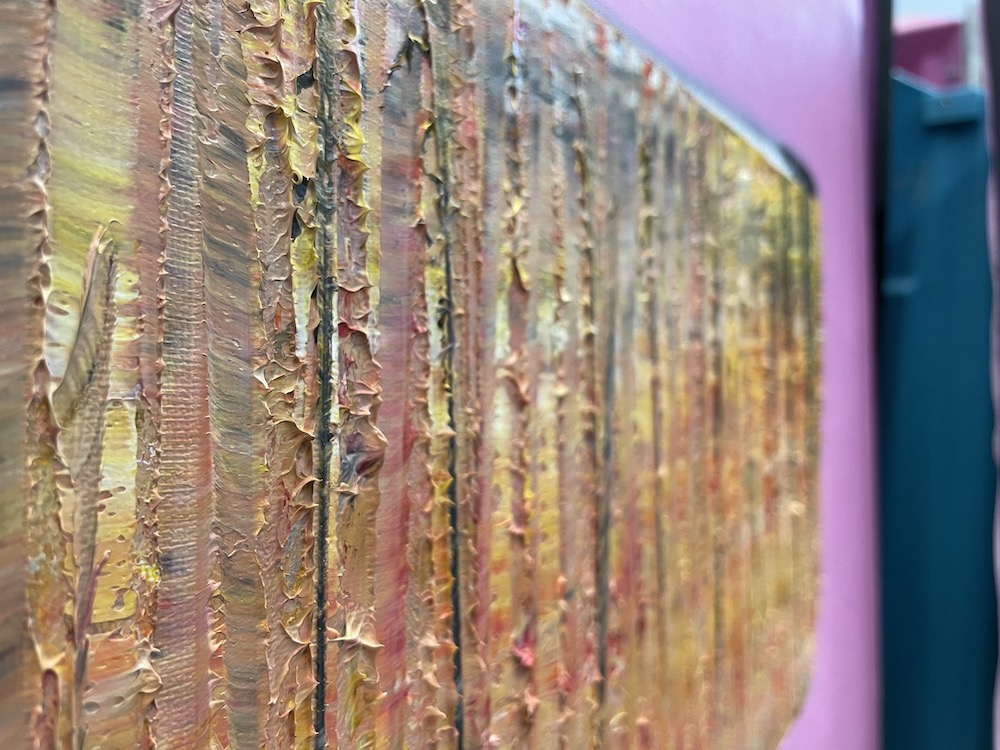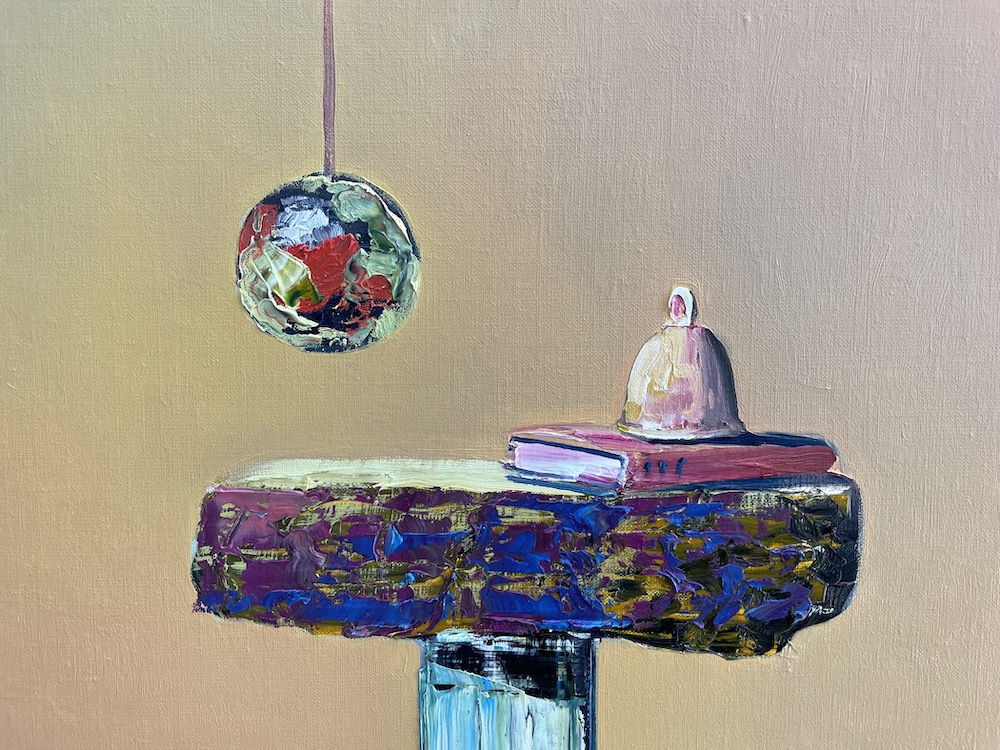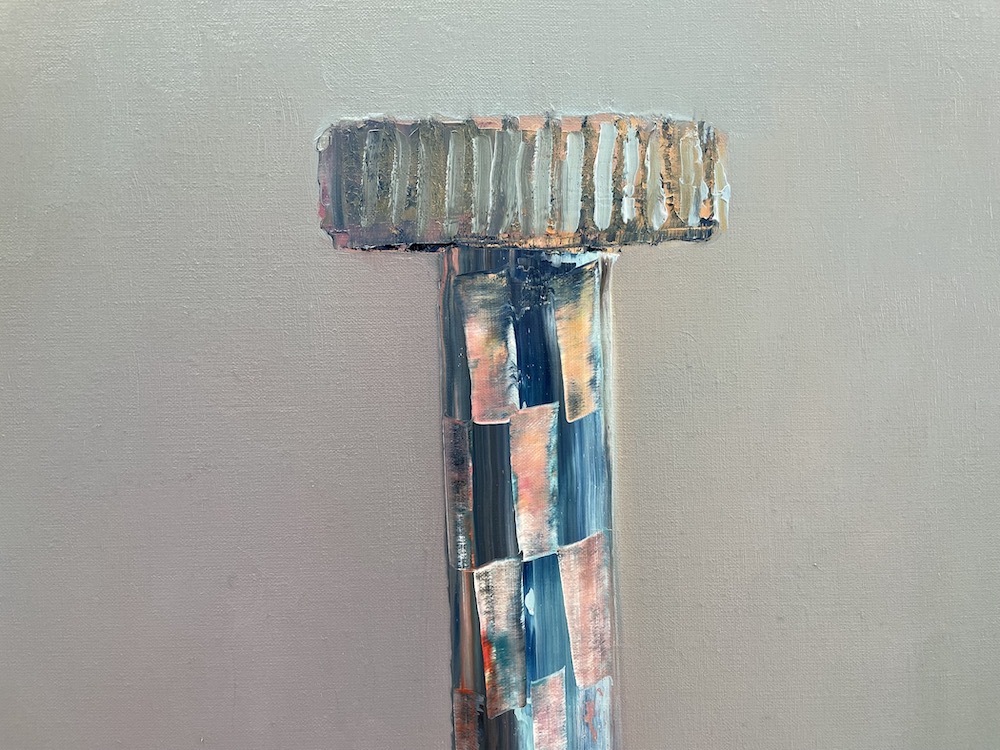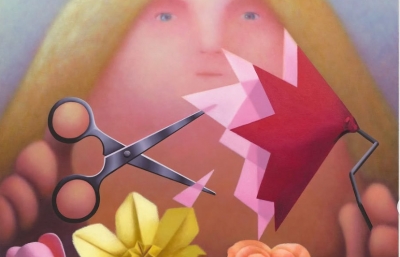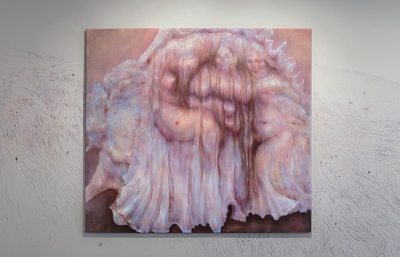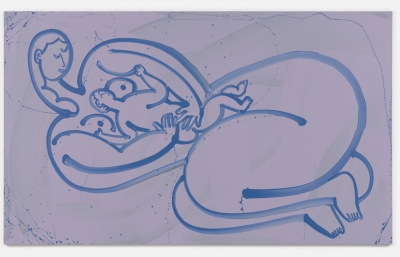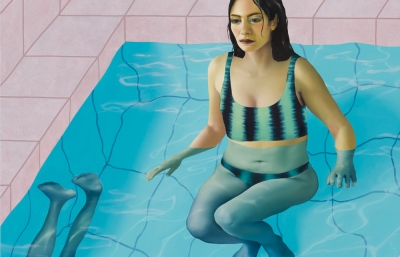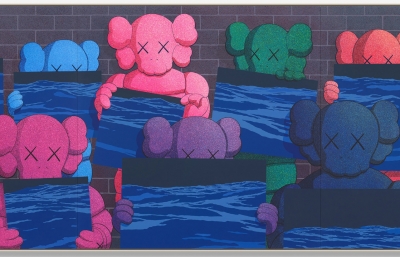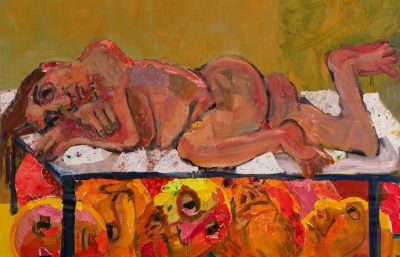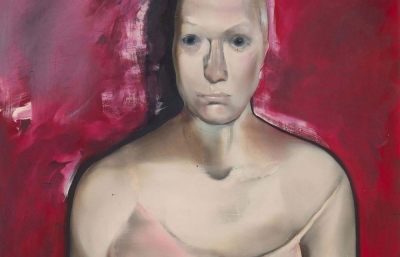A few weeks ago we stopped by Ivan Seal's studio in Berlin (in reality, it's his partner, Sofia Hulten's studio that she used to create the new body of work), and boy, did we get a treat. Displayed around the jam-packed space were the big scale canvases that were about to get packed and shipped to Carl Freedman Gallery, for his solo show which is gonna be on view from October 10th alongside shows by David Brian Smith and Sebastian Stohrer. But it wasn't only the familiarly looking yet utterly deceptive paintings that were a feast for the eyes but it was the conceptualization behind them and the artist's trajectory which brought them to this point that was a treat for the mind.
When getting deeper into the conversation about what painting is, especially a representational or figurative one, we inevitably reach the point where a painting is deconstructed to a claim or even a lie. In reality, a mass of oil and pigments on a canvas surface deceives us into believing we're looking at a landscape, a fellow human, or any other real/imaginary object/scenery. It was precisely this notion that pushed Seal away from painting some time ago until he reduced his practice to creating literal noise, arguably the purest and non-pretending form of expression. But, his move to Berlin years back and significant life changes revived his love for the medium, and with re-charged appreciation and a different approach to what he wanted to make, he was back at it.
Taking his humanly flawed memory as an ultimate reference, he had decided to use painting's deceptive nature to construct visual baits for the viewer. Whether painting floral compositions, masses reminiscent of boulders or geodes, or as of lately, cat trees, Seal is interested in capturing only the -ness of it. And the flowerNESS or cat treeNESS is achieved by mimicking the shape and crucial qualities of the objects and building his work from that skeleton. Through such a process, the Berlin-based artist is experimenting with the space, its construction on a picture plane, and ultimately, the subversion of our perception. Because while providing us enough visual clues to "recognize" what's painted, what we're actually looking at is far from that. Using the paint as Lego blocks of sorts, he is building, sculpting, and only to some extent painting his imagery to the point where it is far enough from his original idea but still in the realm of holding its -ness. Doting the surface with the brush, faking a variety of actual surfaces or patterns, and most often just smearing the mixture of colors around the surface, he is in a way going back to that same pure (now visual) noise. The inexplicable nature of the work is further underlined with the title of each piece, which taken from the random word generators, further distract the viewer away from trusting their eyes, mind, and memory. At this point, Seal's role as a mediator is finished, and the rest is left entirely between the now finished and ready painting and the world that will experience it. —Sasha Bogojev

